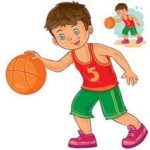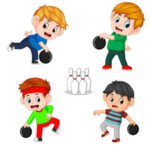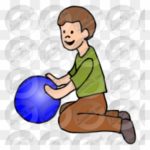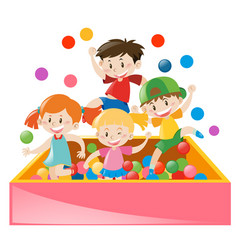
by Neetu | Jun 24, 2021 | Manthan
Aim
This activity will give children the opportunity to practice the skill of throwing overhand. At this developmental age, children should focus on throwing hard at the target. This will enable children to go through the full range of the throwing motion and assist them in “stepping with the opposite foot” when they throw. Stepping with the opposite foot when throwing is an important part of demonstrating a mature throwing pattern.
Equipment Required
A yarn ball, Koosh, or beanbag is most appropriate for this activity inside, a plastic ball, or a tennis ball outside. Make sure the ball or beanbag is the size that will easily fit into the child’s hand. Beanbags or yarn balls are best if inside a building as they will not roll away from the children. A small plastic ball can be used outside in a grassy area where there is less chance for the ball to roll away from the child.
Description
Conduct this activity in a large indoor open space such as a gym or multipurpose room where there is a large wall (free of obstacles) to throw at or a large open outdoor space. Ask children to pick up a beanbag and place it in the hand they are going to use to throw (this should be the same hand they write with). “Bend your elbow up and hold the beanbag behind your head, step forward with the opposite foot, and throw the beanbag as hard as you can.” If inside children should be directed to throw hard at the wall. If outside, ask that they throw as far (or hard) as they can into the open field. Teachers may want to place cones or markers in the field so that children have a large target to throw toward. Remember to stress the cues “throw hard” and “step with the opposite foot.” The throwing skills of young children will vary greatly. Some children may want to get close to the wall while others will need the challenge of being farther away. While this activity seems very simple it is an important foundational first step activity for young children learning how to throw.
Note: If children are having trouble stepping forward when they throw, place a tape line, jump rope, or chalk line on the ground and ask that children step over the line when they throw. This will help them begin to develop the opposite foot stepping pattern.
Variations:
As children get the basic concept of throwing hard while stepping with the opposite foot use targets to challenge them to keep practicing. Use large targets indoors such as painting a target on a large sheet and then attaching it to the wall. Outdoors, Provide a restraining line for children to stand behind and ask that they throw over another line that is 20 to 30 feet away. Provide a line that is closer to those that cannot throw as far.
Teaching Suggestions:
With young children, it is important to participate in throwing activities that are both fun and success-oriented. Research tells us that children need to be successful about 80% of the time to stay on task, avoid frustration, and have the best opportunity to develop skills. Children, who consistently miss the target when they throw, may get frustrated and not practice. Throwing activities must be success-oriented in order that children will have the opportunity to develop the skill. The best beginning throwing activity is to simply ask children to throw hard. This allows children to naturally step with their opposite foot when throwing and assists in the development of a mature throwing pattern.
Adaptations for Students with Disabilities:
Many children with special needs may not be able to step when throwing. Ask these children to throw as hard as they can and make sure they have the opportunity to stand as close to the wall or target as needed.
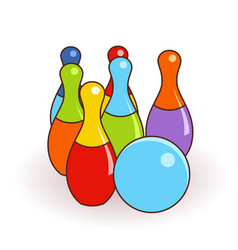
by Neetu | Jun 23, 2021 | Manthan
Aim
To have students practice the underhand motion of bowling.
Activity cues: “Reach back”, “Arm close to the side of body”, “Step with the opposite foot”
Equipment Require
Plastic 16-20 oz. bottles or bowling pins, Small foam balls, Poly spots
Description
Young children get excited about knocking bowling pins over with a ball. They have very little concern about scoring or other competitive aspects of the formal game. Here are ways to present the activity and two ways to organize the pin set-up.
- Related to both pin setup and presentation
In a traditional sense, the teacher can show children how to set up pins in a conventional manner. Ask them to count the number of pins in each row. First row “1,” second row “1, 2,” third row “1, 2, 3,” and fourth row “1, 2, 3, 4”; then confirm that there is a total of ten pins by counting them all. This integrates numeric concepts into the p.e. activity. If the teacher has placed small round stickers on the floor, younger students will have an easier time putting pins in the same arrangement each time.
In order to maximize participation, this would need to be presented in the context of a number of throwing stations. Otherwise, the teacher would need a lot of pins and balls to keep the group size small.
- Pin setup
As an alternative, ask students to design their own pin arrangements and see how the different arrangements affect the way the pins fall.
- Presentation
It is preferable that students work in small groups in order to maximize participation. For example, there might be one student bowling while one or two others set up the pins. Students rotate positions. Since the emphasis is on the underhand throw, (as opposed to the number of pins knocked down), the teacher might use less than ten pins in order to accommodate multiple stations. Very young children will perceive a challenge when throwing at maybe 3 pins from an appropriate distance (appropriate distance maybe 5-7 giant steps away from the roller of the ball and it should not be a regulation size bowling alley length). And, preschoolers can still experiment with various pin arrangements even with only three pins.
For either presentation, each time the students set up their pins, they should return to a poly spot on the floor to make their underhand throw. Initially, the teacher should place more emphasis on the arm swing than other aspects of the throw. The arm swing should begin with a “reach back”, swing forward “close to the body”, and release the ball at a low level (“no bounce”) (remembering to give only one cue at a time). “Step with the opposite foot” may be an appropriate cue only for students who are more developmentally advanced.
Teaching Suggestions:
- For students that easily knock down their pins, challenge them to move their spot back a step after each successful underhand throw.
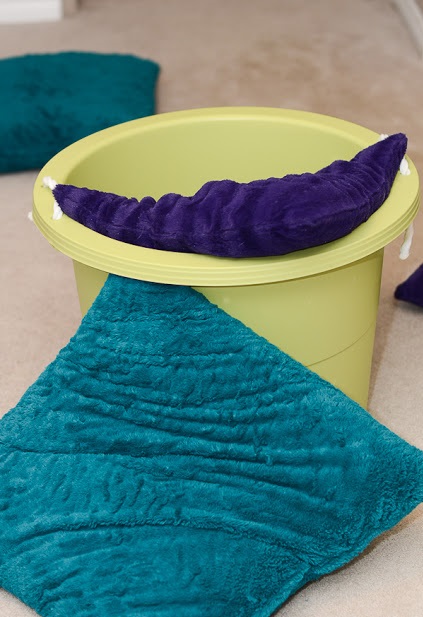
by Neetu | Jun 21, 2021 | Manthan
Activity Description
Pillow Jumping
Scatter pillows across the floor and let the kids jump from pillow to pillow. Encourage them to try running from pillow to pillow, jumping with two feet, or jumping with one foot, etc. You could also call out specific colors of pillows for them to jump to.
Pillow”Balance Beam”
Place some pillows of different sizes and textures into a straight line. Have your child walk across the pillow “balance beam” barefoot to work on vestibular and tactile sensory input. (not pictured)
Pillow Throwing
Encourage your child to throw the pillows into the large bucket from a variety of distances. You could use tape on the floor to mark where your child can throw from. Or try timing them to see how many pillows they can get into the bucket in a certain time period.
Required Material
4 Boundary Cone, Variety of pillows, Bucket

by Neetu | Jun 21, 2021 | Manthan
Begin on your hands and knees. Center your breath, and begin to let your thoughts slow down. Turn your awareness inward.
Spread your knees wide apart while keeping your big toes touching. Rest your buttocks on your heels.
Those with very tight hips can keep their knees and thighs together.
Sit up straight and lengthen your spine up through the crown of your head.
On an exhalation, bow forward, draping your torso between your thighs. Your heart and chest should rest between or on top of your thighs. Allow your forehead to come to the floor.
Keep your arms long and extended, palms facing down. Press back slightly with your hands to keep your buttocks in contact with your heels. Lengthen from your hips to your armpits, and then extend even further through your fingertips.
For deeper relaxation, bring your arms back to rest alongside your thighs with your palms facing up. Completely relax your elbows.
Let your upper back broaden. Soften and relax your lower back. Allow all tension in your shoulders, arms, and neck to drain away.
Keep your gaze drawn inward with your eyes closed.
Hold for up to a minute or longer, breathing softly.
To release the pose, gently use your hands to walk your torso upright to sit back on your heels.
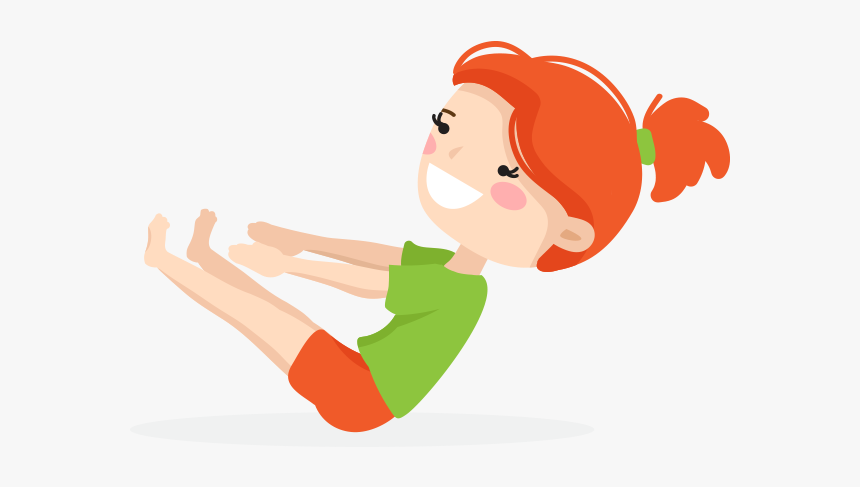
by Neetu | Jun 21, 2021 | Manthan
Lay either belly down or on back on the mat
If using progression from Caterpillar to Butterfly; easier to be belly down
Be still; unmoving
Deep breaths
Breathwork: begin to breathe in at toes, up through legs, belly, chest, arms, throat, face, and up through the top of the head. Breathe out starting at top of the head, all the way back down, completing breath out from the toes







